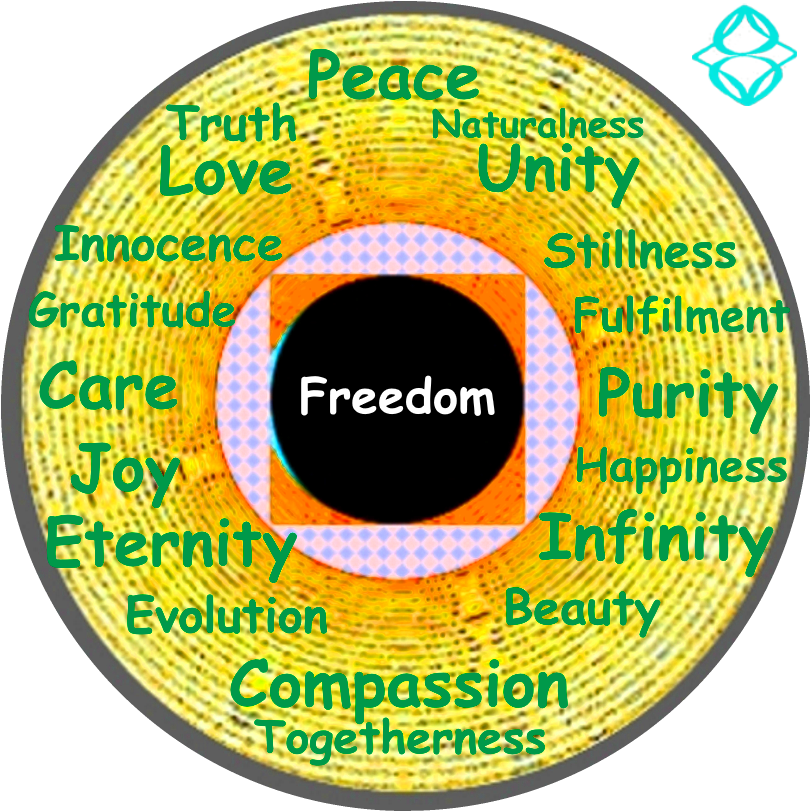Formed by Trauma: The Power of the Repeated Message
Georgi Y. Johnson and Bart ten Berge
Sam, a seven year-old child is playing with his five brothers and sisters in the garden while his mother prepares food in the kitchen. When the children come inside to eat, they notice that the younger sister, three year-old Elsa, is missing. Hysteria ensues, as the family and neighbors search the area. Dread turns to disaster when the body of little Elsa is found drowned in a neighborhood well.
This is a classical trauma, one that will form Sam for the rest of his life, manifesting as a lack of balance between freedom and responsibility, shame and care, playfulness and the fragility of life. As he grows older, Sam’s entire personality could be formed around this traumatic event – a structure of personality that even years later could manifest as crisis or uncontainable suffering.
Yet trauma is more complicated than one event. The impact of any one occasion is colored and given substance by the social or familial environment. In the case of Sam, this involved a daily message of needing to earn his right to exist, or goodness, by taking care of his brothers and sisters. In this, he would constantly fail, (as he was only seven). This sense of failure or not being good enough took on dramatic form with the drowning, to be compounded with pain and guilt of such an uncontainable nature that it could no longer be spoken out. The traumatic event, for Sam, became the anchor and reality proof of a traumatic back drop which was already forming his young personality in the world.
 In this sense, with or without a dramatic, causal event, we are all formed by trauma, which we carry and pass on from one generation to another.
In this sense, with or without a dramatic, causal event, we are all formed by trauma, which we carry and pass on from one generation to another.
The repeated message about a child’s right to exist, or the extent to which he or she can be loved in naturalness and freedom, is the mortar from which the personality is formed. Singular events, often dramatic but sometimes not, give repeated proof to this form as somehow absolute or definitive. At some stage, the traumatic state as structured through beliefs, experience and events, becomes signed, stamped and sealed as absolute reality.
Structures of personality, identified as absolute or definitive, tend to attract the life circumstances to prove themselves as the last truth or reality. And when personality is seen as the definitive beginning and end to a person’s existence as a human being, then any threat of rejection can be received as an existential threat.
How to Recognize Trauma?
Trauma, whether through repeated messages, singular events or both, can be identified as a happening which is not containable within normal life and experience. In its base line, it is a happening which is rejected by the whole system, individual and collective.
Traumatic events and messages are too much to bare in the moment, and are experienced later as impossible to integrate. In this sense, traumatized states represent a whole area of experience that is left unresolved and is cordoned off from “normal” life for the purpose of survival.
From a therapeutic viewpoint, the ability to recognize and name a traumatic state as such becomes paramount as the first stepping stone towards healing, integration and freedom.
When we enter a traumatic state, there is a significant narrowing of perception. The mood, or feeling (often rage or intense fear) of the trauma denies any middle way, as it takes an absolute hold on all levels of experience. The body and nervous system becomes caught in a state of high alert; the awareness becomes enclosed in forms of despair or negativity; and consciousness becomes ensnared with thoughts that seek to take control of the traumatic threat.
The person absolutely begins to think and feel in absolutes. All the time. Everyone. Everywhere. Perception moves into a tunnel vision which excludes the connection with the individual’s normal resources, qualities, intelligence and natural freedom to express.
Of Fear and Freedom
 Choices and perspectives are increasingly lost, along with the spaciousness and freedom to heal. Mechanisms and strategies of survival are mobilized: among these are flight, fight and freeze. Often, these responses have no direct rational relation to what is really happening around the individual: seen from the outside, the person seems to be “losing it”.
Choices and perspectives are increasingly lost, along with the spaciousness and freedom to heal. Mechanisms and strategies of survival are mobilized: among these are flight, fight and freeze. Often, these responses have no direct rational relation to what is really happening around the individual: seen from the outside, the person seems to be “losing it”.
From the inside of a traumatic state, there is a familiar and intimate sense of despair, unworthiness and helplessness. It can feel like this despair was born together with the person himself – as if he or she is existentially cursed. It is intensely isolated, and yet secretly self-righteous in the sense of deeper truth – a truth which vengefully, sooner or later, will be revealed. With this, there is an urgent sense of uncontainability – as if this private “truth” will be told, one way or another, through hell or high waters. Indeed it will. One way or another, sooner or later, every trauma will be reintegrated into the whole spectrum of experience.
Yet when the trauma breaks out, and begins to manifest in life, often the help that could be there to finally heal and integrate the trauma is denied and the person receives collective condemnation or even a psychiatric label. Sam suddenly “went crazy” when he was 30, abandoning his young wife and running away to Thailand. Sam is clearly a real, negligent swine, and his mother was right. It seems he is bi-polar.
In order to avoid this loss of face in the social field, there is a great collective movement to support the individual in denying trauma, in order to keep the beast in its cage and out of sight. This begins with the traumatic event itself, (when Sam and his siblings were ushered out of the room away from the ambulance and the body of their dead sister), and continues throughout life as traumatized behavior appears to be destructive, mindless and provocatively anti-social. Medication used as a mechanism against natural human despair is an example of a socially affirmed tool to repress the possibly destructive expression of trauma. Yet while it might buy time for integration, it is often where the healing of a traumatic state is again postponed to appease individual and social systems based on fear.
The individual often moves with this, striving to adapt his or her antisocial mood swings in order to restore a sense of belonging or harmony within the whole. In this, there is a repeated affirmation of the movement of repression or denial which created the traumatic state in the first place.
If Sam were not to break loose and run to Thailand, he could turn the punishment upon himself, freezing whole areas of feeling in depression, or espousing the distraction of addictive patterns in order to keep the beast well buried. Other manifestations can include nervous break-down, physical disease, or general burn out.
Either way, Sam is a loser; and anyway, the grief in his own intimate experience of the random horror of Elsa’s death is unprocessed and disallowed.
Healing Trauma
 Traumatic states in varying degrees are so ubiquitous, and in many ways collective, that modern therapy is often limited by precisely those collective social fears out of which traumas are formed in the first place. Classically, these fears are noted as the fear of death, the fear of insanity, the fear of sexuality and the fear of disease. All four of these fears can be summarized under a meta-fear – the fear of rejection from the whole.
Traumatic states in varying degrees are so ubiquitous, and in many ways collective, that modern therapy is often limited by precisely those collective social fears out of which traumas are formed in the first place. Classically, these fears are noted as the fear of death, the fear of insanity, the fear of sexuality and the fear of disease. All four of these fears can be summarized under a meta-fear – the fear of rejection from the whole.
Following are five tips to support a therapist in supporting an individual in healing trauma.
1. Humility – Releasing Conscious Agenda
A therapist or healer who sees himself as untraumatized and separate from traumatized individuals is often already positioned in an agenda to avoid traumatic states within himself. The veil between one person and another is very thin, and within the experience of human evolution, we collectively share whole fields of suffering – including sexual abuse, betrayal, cruelty, helplessness and despair.
If the therapist is not able to allow these forbidden areas into his or her experience, then the ability to allow the healing of the traumatized form within the other will be limited.
The more a therapist can move with togetherness and equality, the more opportunity is opened for healing. This equality is found from an existential dimension beyond judgment, and as such is expressed with a depth of respect towards the human challenges of the other.
It is tremendously important when an individual is moving through a traumatic experience, for a therapist to be able to witness it as only an experience, one of many. Otherwise, the therapist could find himself either disconnecting or joining the client in the tunnel vision of the traumatic state.
2. It is what it is: the And-And of Awareness
The ability to open with acceptance towards whatever is surfacing within the client is critical. Defense mechanisms against trauma come in many disguises, including aggression, therapeutic research (studying the enemy), and sudden manifestations of intense loyalty towards family patterns as if they were absolute.
Every detail that emerges within a therapeutic environment is trauma telling its tale. The environment needs to provide the safety for this – which means the unconditional freedom to reject, play out or leave therapy for a while. The trauma is one of the sacred building blocks of personality, and as such, the individual themselves must be allowed full and safe permission to realize it as non-absolute in his or her own time and through his or her personal responsibility for life structures.
3. Don’t Divide
 Trauma moves by taking an absolute hold on a person’s unconditional existence. That is to say, trauma presents a divisive restriction on how far the person is allowed to experience love or peace in their lives. As an absolute rule of law (through which it has the person unconsciously in its grip), it tends to manifest in great either-or equations.
Trauma moves by taking an absolute hold on a person’s unconditional existence. That is to say, trauma presents a divisive restriction on how far the person is allowed to experience love or peace in their lives. As an absolute rule of law (through which it has the person unconsciously in its grip), it tends to manifest in great either-or equations.
This is true on the level of beliefs: for example – “no man can be trusted sexually”. It also emerges on the level of feelings. The traumatized individual is simply unable to allow several feelings at once. For example, they can either love, or hate; it is either misery or happiness; total oppression or anarchistic freedom. Others are either with them, or against them. There is no middle way. In this there is the buried belief that the one that is traumatized can never truly be part of the whole.
By constantly and gently opening the possibilities of the individual to the and-and scenario, the traumatic state can begin to be integrated.
This means bringing in relativity through language – correcting “I am a horrible person” with “Right now, I feel myself to be a horrible person”; or “She is the devil incarnate”, with “Right now, she looks like the devil incarnate”; or “Everybody hates me”, with a question: “Everybody? Do you feel that I hate you?”
Opening the possibility for the traumatic state to be relativized is critical, and most importantly within the realm of experience and feeling.
A simple method is to have the person locate an area in the body where they feel themselves relaxed and good and to stay there a while with their attention. Then to have them move to an area where they feel stress or pain and to stay there, while speaking out the feelings that emerge. A gentle, perceptive and sentient alternation between different areas of pleasure and pain opens the way for relativization and integration. It also signals to the entire system that it can be safe to allow the integration of the forbidden traumatized areas. It is not either-or, it is and, and, both, many possibilities.
4. Out of Emptiness: the Animal Aspect
 Dr. Peter Levine in his book Waking the Tiger has brought forward some wonderful insights and tools in order to help integrate trauma through the recognition and integration of the animal parts of ourselves.
Dr. Peter Levine in his book Waking the Tiger has brought forward some wonderful insights and tools in order to help integrate trauma through the recognition and integration of the animal parts of ourselves.
Animals, including humans, have a natural process in order to accept, integrate and release a traumatic event. Within the social environment, this process is denied to most humans. In the instance of attack from the uncontainable, an animal will freeze, and surrender to death. This position can be located in modern psychology as dissociation. When the threat is removed, and the animal is not killed, it will often begin to shake, quite uncontrollably. This is a natural and needed released of nervous energy, in which the animal is literally returning to its body. In the last stage, it will run, with an incredible speed or if needed, fight with a strength beyond all norms.
These instinctive processes are part of the processing of trauma also for humans, and can be allowed therapeutically to support the integration of events that could have taken place decades before. They are physical processes connected with the discharge of energetic stress which are often in direct conflict with the thinking mind which tries to harmonize with the wider social arena. (You can cry at the funeral, but not too much).
In conventional psychology, dissociation, shaking or the emergence of the killer fighter, is often seen as a critical point in which medical intervention, or hospitalization is needed, a movement which could in many cases, actively prevent the healing of trauma. Through techniques of somatic experiencing, the mental story is unpinned from the biological and emotional need to release the energy held by the traumatic state.
5. I AM HERE. The Power of Perception
 It is possible for trauma therapy to arise out of a wisdom that whatever can be thought, seen, felt or experienced does not absolutely define who we are. Although we all have personalities and express through a world of form, we are at source far more than the changing personality and we are inherently free from form.
It is possible for trauma therapy to arise out of a wisdom that whatever can be thought, seen, felt or experienced does not absolutely define who we are. Although we all have personalities and express through a world of form, we are at source far more than the changing personality and we are inherently free from form.
From this perspective of existential freedom, both therapist and client can begin a shared process together in allowing all forms of personality be relative and not absolute. This brings the creative freedom to attune to what is most needed and essential in the benefit of the whole.
We are not the thought, we are the one who is able to think. We are not the feeling, no matter how intense the feeling might be, we are that which is able to feel. We are not the self we are working on. We the one that is able to allow this self, this personality, to be healed and transformed.
In this, a powerful existential trust can be born between the therapist and the client which creates a freedom through which whole “states” of being can be observed through shared awareness. Often, this shared awareness is the most stable backdrop to healing trauma. Awareness itself is the spacious agent which can allow the rejected event and experience back into the individual system, through which it can find an acceptable form in the social field.
Bart ten Berge and Georgi Y. Johnson are partners within Chashymie – an international practise of inner growth and healing education registered in Europe through the International School of Spiritual Psychology (ISSP). I AM HERE – Opening the Windows to Life & Beauty outlines the refinement of the windows of consciousness and awareness through perception through emptiness referred to this in this article.




